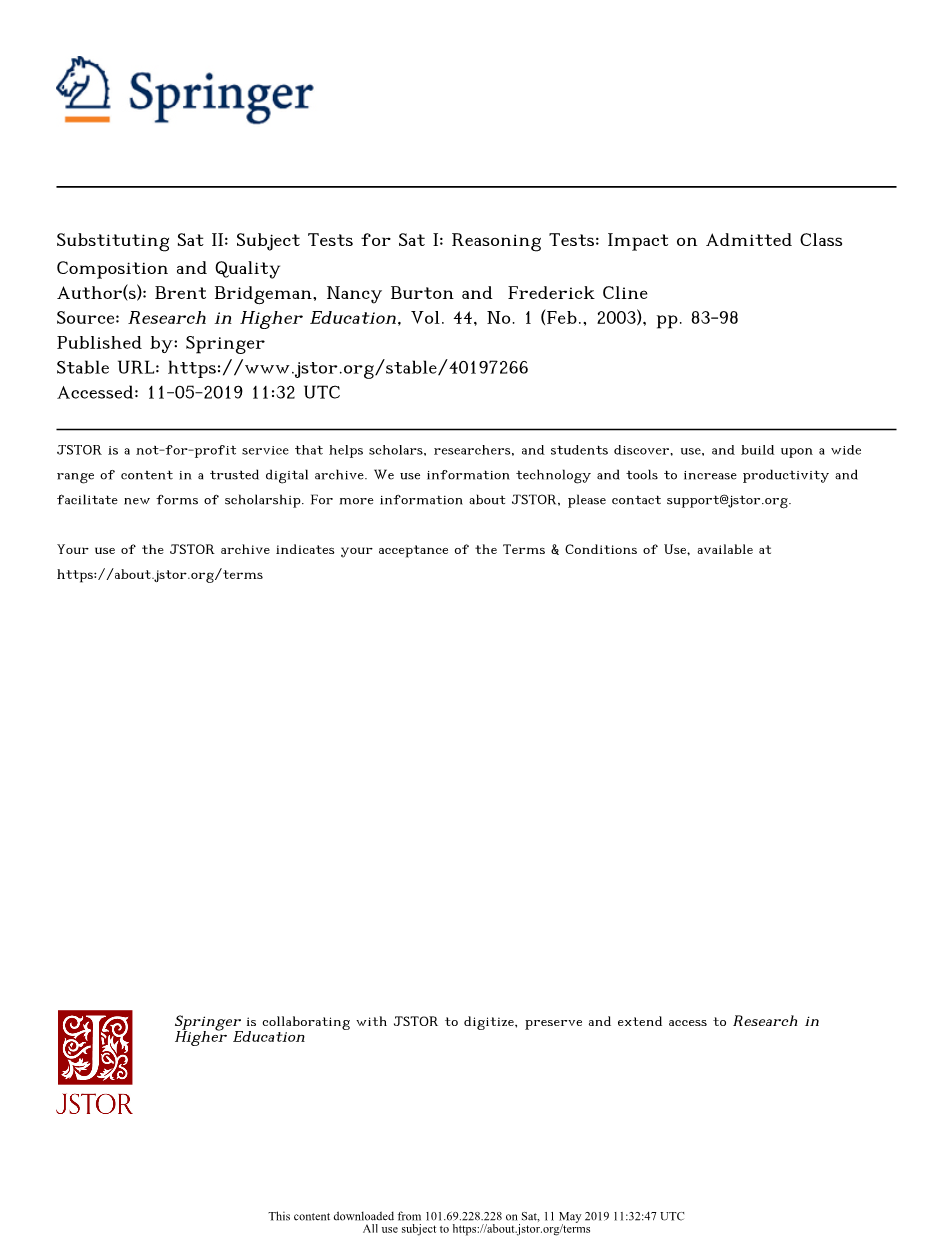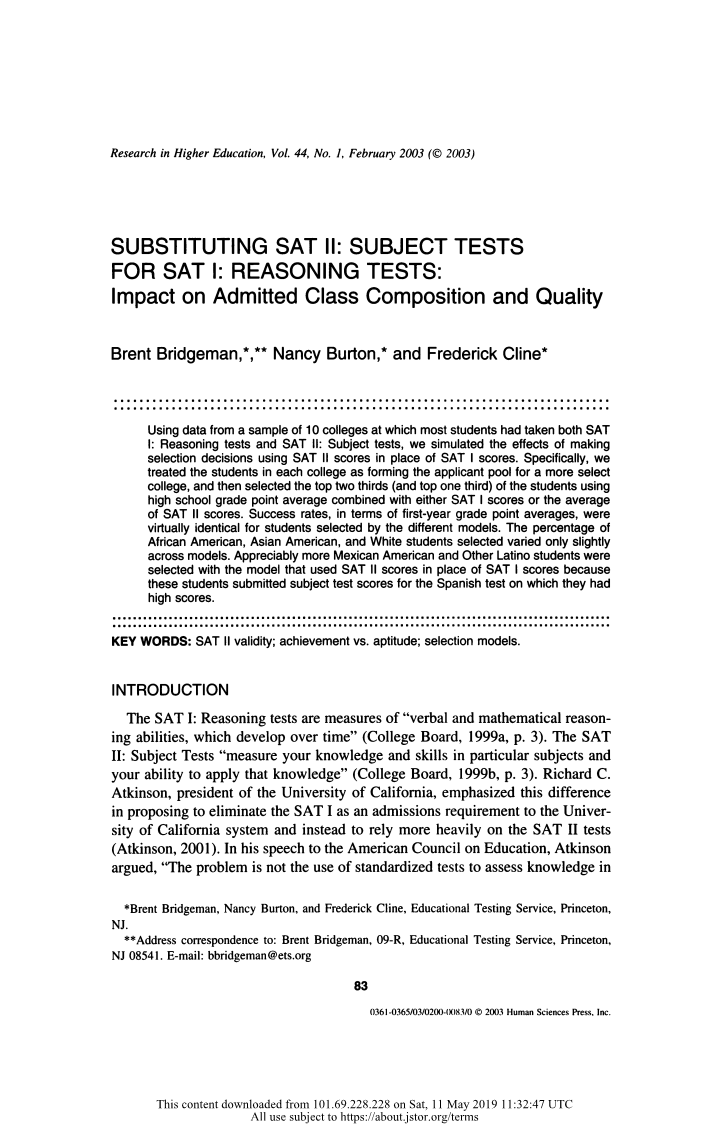本科毕业设计(论文)
外文翻译
The Relationship between Studentsrsquo; Performance on Conventional Standardized Mathematics Assessments and Complex Mathematical Modeling Problems
作者:Ozgul Kartal ; Beyza Aksu Dunya ; Heidi A. DiefesDux ; Judith S. Zawojewski
国籍:Canada ; America ; America ; America
出处:《International Journal of Research in Education amp; Science》
原文正文:
Abstract
Critical to many science, technology, engineering, and mathematics (STEM) career paths is mathematical modeling—specifically, the creation and adaptation of mathematical models to solve problems in complex settings. Conventional standardized measures of mathematics achievement are not structured to directly assess this type of mathematical modeling. Therefore, a major question is whether a conventional standardized test can serve as a reliable predictor of studentsrsquo; potential to mathematical modeling performance. To investigate this question, a study was designed to find the relation between studentsrsquo; conventional standardized measures of mathematics achievement and their performance on mathematical modeling problems. Studentsrsquo; (N=1656)SAT(Scholastic Aptitude Test) mathematics scores were used as a conventional standardized measure of achievement and studentsrsquo; scores on two model-creation problems based on complex settings were used to capture mathematical modeling performance to answer the question whether standardized achievement tests function well in predicting their mathematical modeling performance.
Key words: Mathematical modeling; Model eliciting activities; STEM careers; Modeling capabilities, Standardized tests.
The Research Question
The study is designed to find the relation between studentsrsquo; conventional standardized measure of mathematics achievement and their subsequence performance on mathematical modeling problems.
Method
To investigate the relationship between studentsrsquo; performance on traditional indicators of achievement and their mathematical modeling capabilities, this study taps the extensive information available concerning Purdue University first-year engineering students. Their American College Testing (ACT), Scholastic Aptitude Test (SAT), and Assessment and Learning in Knowledge Spaces (ALEKS) scores are used as indicators of traditional mathematics achievement. The two-semester long first-year course sequence from which the data was gathered incorporated four model-creation activities based on complex problem settings; these are called model-eliciting activities (MEAs). The models students created were evaluated and contributed to the course grade. Studentsrsquo; MEA grades are used in this study to investigate the potential for assessment of modeling capabilities as a viable alternative mode of assessment that would complement the conventional standardized tests.
Setting and Sample Population
The data was gathered from student performance in the first year engineering course, ENGR 132-Ideas to Innovations II, at Purdue University. The data were collected during the spring 2012 semester from a total of 1655 students enrolled in the course. The course met in sections of 120 students (maximum) twice each week for 110-minutes. Instruction was faculty led and supported by one Graduate Teaching Assistant (GTA) and four Peer Teachers (PTs) ranging from sophomores to fifth-year seniors. Two MEAs were implemented during the semester-long course; each was launched in the classroom and student-generated models were iteratively modified to completion using peer and instructor feedback outside of class by students working in teams of three or four. Thus, there were a total of 416 teams across 15 sections.
Instrumentation for Assessing Modeling Capabilities
MEAs are interdisciplinary realistic problems in which a client expresses a need for a solution to a complex problem that requires a mathematical model be produced. Moore and Diefes-Dux (2004) point out that MEAs are carefully crafted to make sure that the students are given enough information to make informed decisions about when their model meets a clientrsquo;s stated requirements. MEAs are carefully designed based on six design principles (Lesh, Hoover, Hole, Kelly, amp; Post, 2000) and repeatedly field tested until they do indeed prompt students to generate mathematical models when students are genuinely engaged in the problems. A typical format of an MEA, as described by Diefes-Dux, Hjalmarson, Miller, and Lesh (2008), is that the students first read an article or a description that helps them enter into the MEA problem context. This is followed by the MEA problem statement, a memo from the client expressing the need for a mathematical model. The MEA problem statement is written in a way that requires the students define for themselves the problem that the client needs solved. Then students collaborate with peers to create a mathematical model that will successfully meet the clientrsquo;s needs. During this collaborative process, problem solvers typically describe, revise, and refine their ideas during the problem-solving episode and use of a variety representational media to explain (and document) the conceptual systems they have designed (Lesh, Carmona, amp; Post, 2004). Typically, one episode lasts a couple of weeks. A variety of reasonable models can be designed to meet the clientrsquo;s needs given well-articulated varied assumptions and rationales. Students who productively engage in the MEA typically go through multiple iterations of testing and revising their solution (i.e., models), ensur
剩余内容已隐藏,支付完成后下载完整资料


英语原文共 17 页,剩余内容已隐藏,支付完成后下载完整资料
资料编号:[272328],资料为PDF文档或Word文档,PDF文档可免费转换为Word


